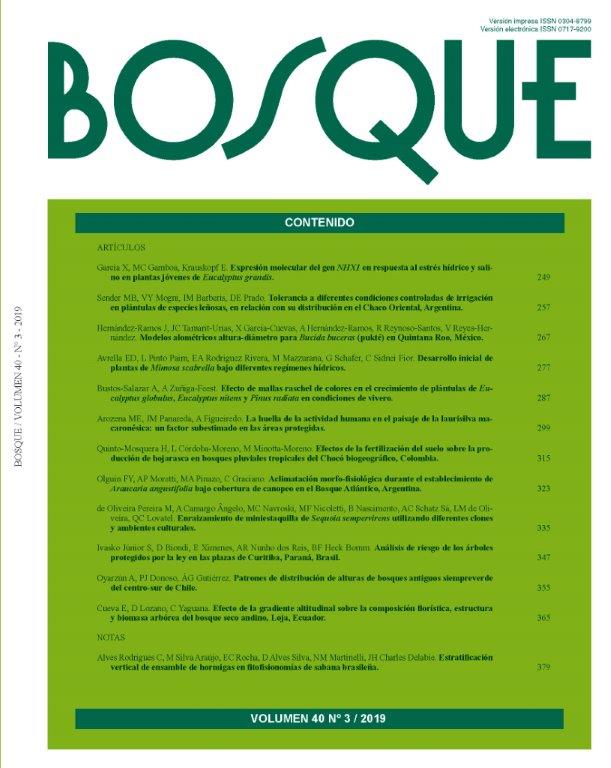Risk assessment of trees protected by law in Curitiba squares, Paraná, Brazil
Main Article Content
Abstract
The aim of this article was to evaluate the likelihood of failure of trees protected by law located at Curitiba squares, Paraná, through the adaptation of the tree risk assessment proposed by the International Society of Arboriculture (ISA). Among all 14 trees analyzed, 11 types of defects were identified in the trunk, with the predominance of canker and codominant stems; 12 in the crown, with the presence of dead and broken branches; and seven in the root system, where root lifting was the most recurrent problem. The evaluation of the tree risk assessment indicated that eight of the 14 trees demonstrated moderate risk (57.14 %), presenting 5 to 12 defects; five had a low risk (35.71 %), with one to seven defects; and one was categorized as a high risk of failure (7.14 %), which had 17 defects. Half of the trees presented the risk assessment associated with defects in the trunk, two of them with problems in the crown, and two others had more defects in the root system. These results highlight the importance of monitoring and maintaining the quality of urban forests, a fact that contributes to the safety and well-being of the population that visit Curitiba squares.

